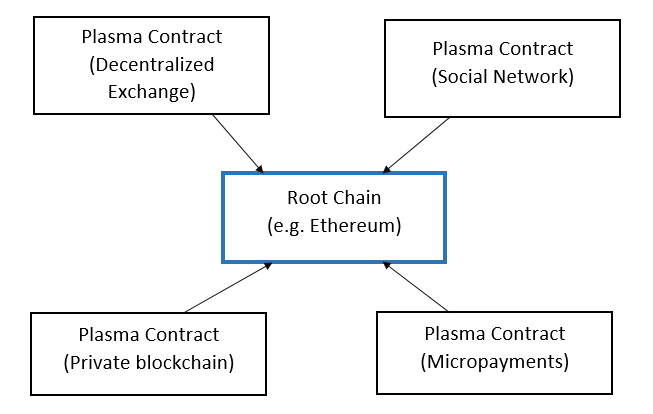Plasma is a new concept introduced by Vitalik Buterin and Joseph Poon in a research paper titled Plasma: Scalable Autonomous Smart Contracts, which was published in August 2017. It is similar, in a way, to state channels as it aims to build a platform for conducting transactions off the main blockchain, while it's still connected to it.
The novelty here is that Plasma allows for so-called child blockchains attached to the main Ethereum blockchain through a set of smart contracts. Each child chain, in turn, can have its own child sub-chains. This architecture enables many complex operations to be done by smart contracts only at the child chain level, with minimal interaction with the Ethereum mainnet. In this way, the scaling of entire decentralized applications can be managed. With Plasma, we can avoid the replication of every single smart contract operation across all full nodes on the Ethereum network. This solution would spread around the workload of transaction processing and make the Ethereum network much lighter and more efficient. The plasma architecture is shown in the following diagram:

In Plasma, child blockchains can have their own consensus algorithm, which can be different from the one used by the Ethereum mainnet.
Plasma also provides a security mechanism, which guarantees that users can always withdraw their funds and assets from the child chain to the main Ethereum blockchain.
For securing Plasma chains further, another mechanism can be deployed, where validators or block producers on child chains commit deposits in a smart contract on the Ethereum mainnet, which binds them to play by the rules, at the peril of losing their deposit.
If we compare the state channel technology to the Plasma technology, state channels should still allow faster and cheaper transactions, while Plasma should allow more functionality and flexibility. Both technologies can actually be combined, with state channels built on top of Plasma chains.